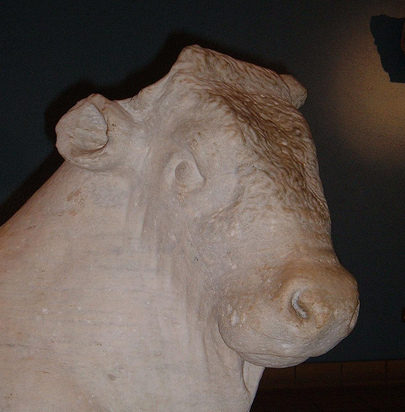In response to a comment by kyrogenix, there follows a dry summary of what a typical traditional cataloguer does with his day.
If anyone asks me what I do as a cataloguer, I say that I spend my time describing books. I put books on the library catalogue database and add headings to make them easier to find. There are a variety of largely international standards that are used, the most important being the Anglo-American Cataloguing Rules 2nd edition (AACR2), MARC21, and Library of Congress Subject Headings (LCSH).
Cataloguing theory and rules were originally formulated before computers were in widespread use, so modern cataloguing is in theory a two-stage process:
- Preparing a record using AACR2
- Encoding this record in MARC
In practice, these are done simultaneously.
Preparing a record
A book is described using the rules set out in AACR2. These set out what information goes into a record, how the information is formatted- including punctuation, capitalization, standard abbreviations, forms of names, etc.- and how the record is organised. A catalogue record is divided up using standardised punctuation, which is as valid on a printed catalogue card as on a computer record, and does much the same job in dividing up a record as metadata tags. Preparing the record itself consists of two parts:
- Writing a description
- Adding headings
The description for a books looks something like the following:
Harry Potter and the prisoner of Azkaban / J.K. Rowling. — London Bloomsbury, 1999. — 317 p. ; 20 cm.
In the days of card catalogues, there had to be a main index card which held the full description: this was called the main entry; to make it easier to find, added entries were created to provide brief pointers to the main card. In the world of the computer, this is irrelavent as there will only ever be one copy of the record, corresponding to the main index card; however, a great deal of effort is still expended in deciding what the main entry is according to the vastly overcomplicated rules of AACR2. In most cases, it is simply the author- in this case J.K. Rowling- with an added entry under title. Books such as the Bible or the Oxford English Dictionary will have the title as main entry (not God or Oxford University Press).
There are even more complicated, though more useful, rules determining the form of the name, and this is in fact one of the strengths of library metadata over many new efforts, which have not yet addressed this question adequately. Standardisation has been greatly helped by authority files, which are registries of such headings. These are becoming international, and the main one now is the Library of Congress Authority file, a free version of which can be searched at DRA Web. The entry for J.K. Rowling is Rowling, J. K.. The authority file notes that this is to be used in preference to:
- Rowling, Joanne K. (Joanne Kathleen)
- Rowling, Jo
- Scamander, Newt
- Whisp, Kennilworthy
- Roling, G’e. Ke
- Rowlingová, Joanne K.
- Roling, Dzh. K.
(Try looking at Shakespeare, William, 1564-1616). As a main entry, this heading is added to the top:
Rowling, J. K.
Harry Potter and the prisoner of Azkaban / J.K. Rowling. — London Bloomsbury, 1999. — 317 p. ; 20 cm.
Any further headings (including subject headings) are added to the bottom; the title is automatically treated as a heading.
Endoding the record in MARC
MARC originated in the 70s primarily as an exchange and publishing format (rather than necessarily as a cataloguing tool). It split into various versions (e.g. UKMARC, USMARC, and UNIMARC. These are now starting to unite again as MARC21, which is basically a revised version of USMARC. MARC uses numbered fields for various parts of the record, and lettered subfields for smaller parts of the record. Strange things called indicators give more information about fields. For instance, the 260 fields holds the publication information, in which subfield a holds the place, subfield b holds the publisher, and subfield c the date. The Harry Potter record in MARC21 looks something like this:
100 1_ a Rowling, J. K. 245 10 a Harry Potter and the prisoner of Azkaban / J.K. Rowling. 260 __ a London b Bloomsbury, c 1999. 300 __ a 317 p. ; c 20 cm.
Notice how the AACR2 punctuation is retained in the MARC record. In the 260 field, the distinction between the place, publisher, and date is effectively maintained in two different ways by punctuation, and by subfield names, which seems a little silly.
Those are the basics: most cataloguers would also add subject headings (LCSH can be searched on the DRA Web site mentioned above) to most books, if not always to fiction, and assign classmarks, using Dewey Decimal Classification, Library of Congress Classification, or some such scheme, all of which have their own MARC fields. There is a lot more to it than this: if nothing else, I have only looked at book cataloguing. The rules are still not fully equipped to deal with videos, ebooks, CD-ROMs, websites, etc, but they are slowly getting there and can do it if required.
Next time you have a book in your hand, look behind the title page for the CIP data which may be provided: it will look like the AACR2 record above; and if you ever search a library catalogue, look for a MARC display option: it will look like the MARC record above.
